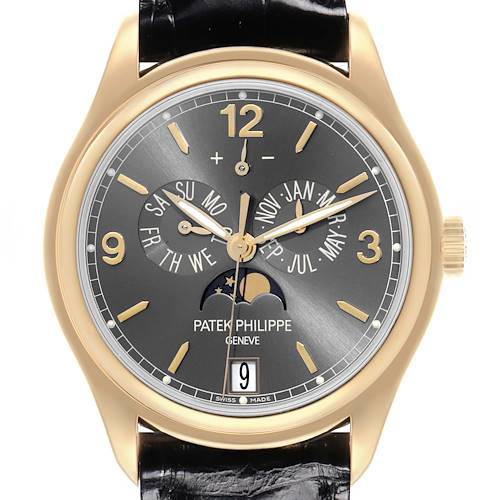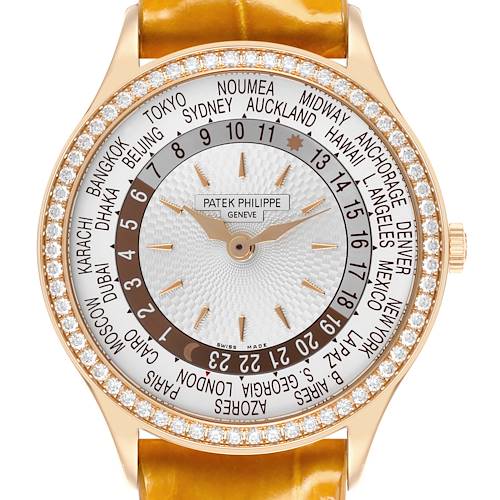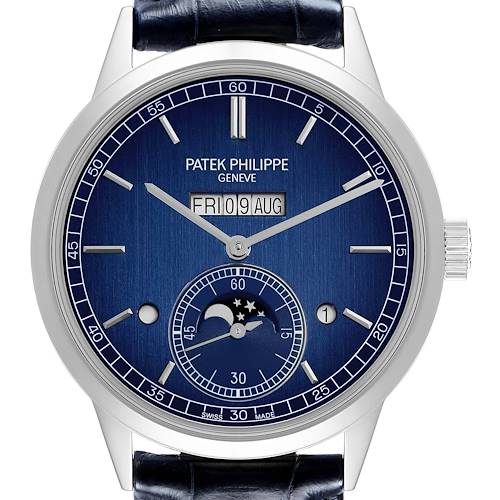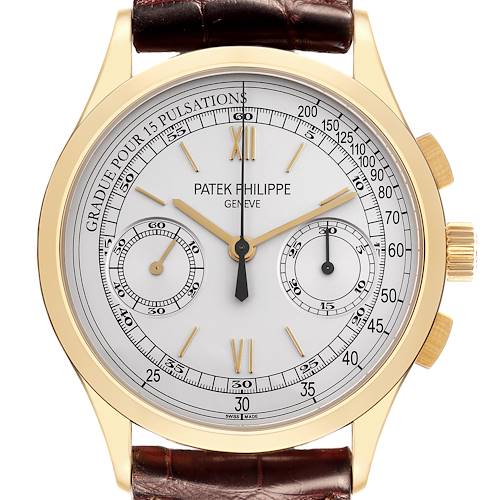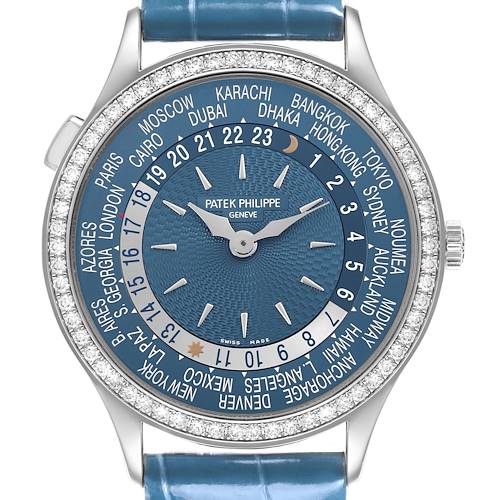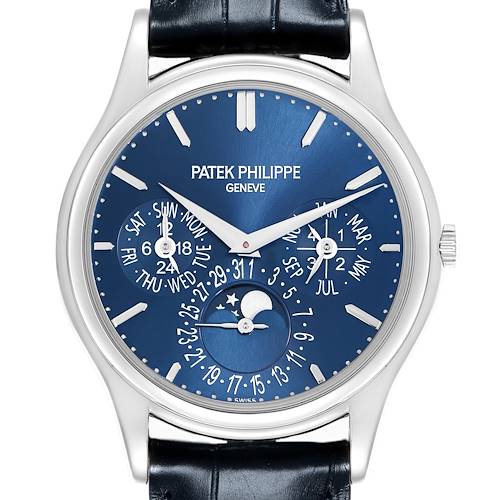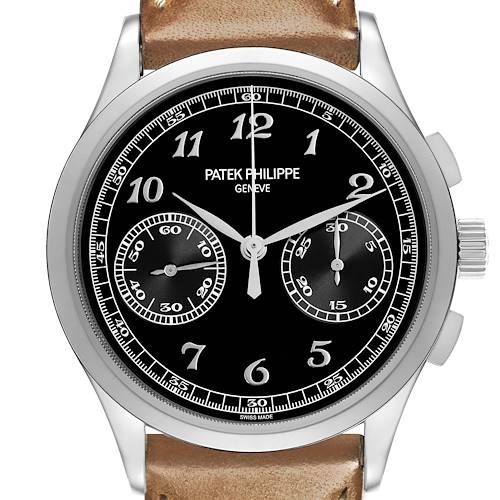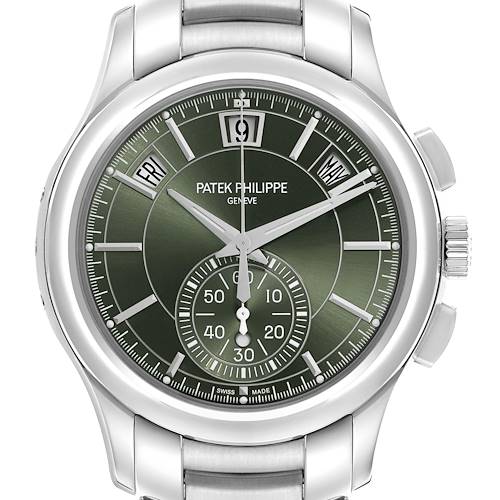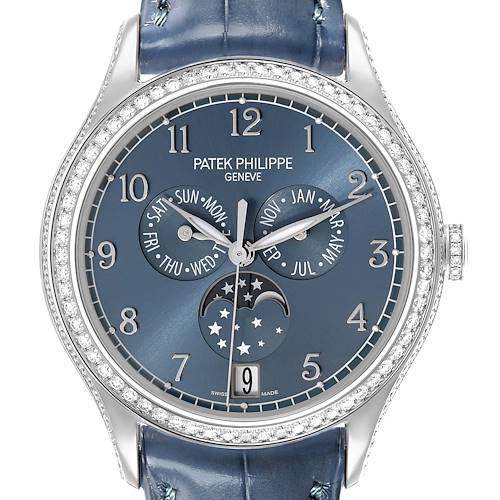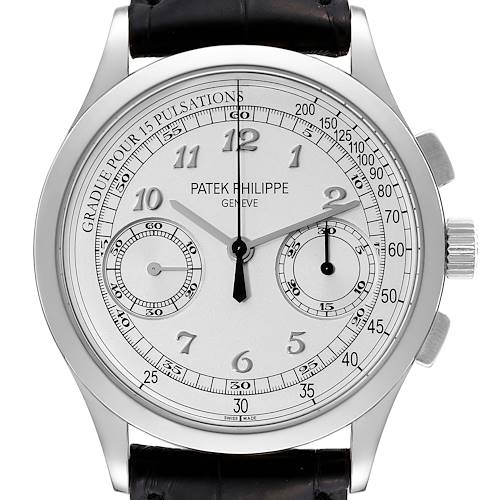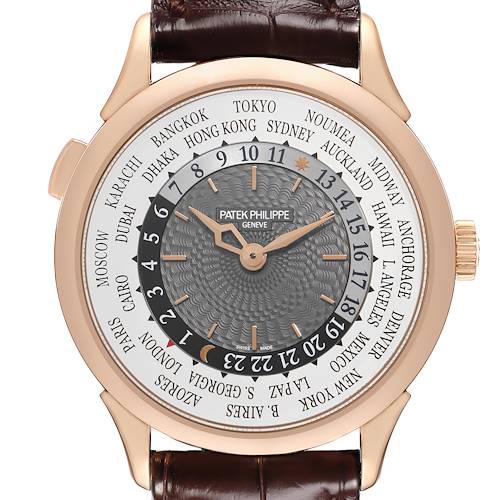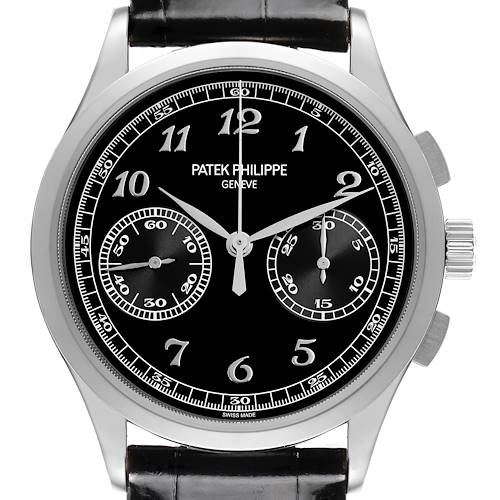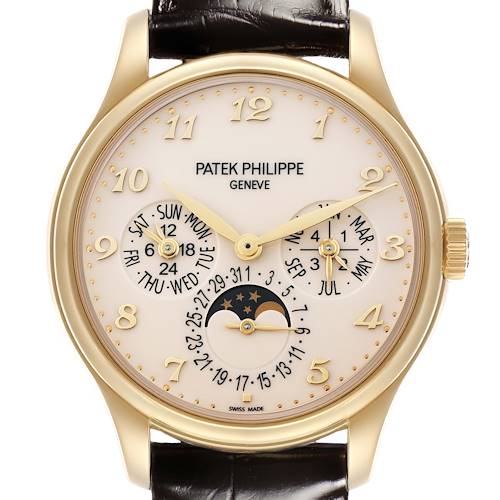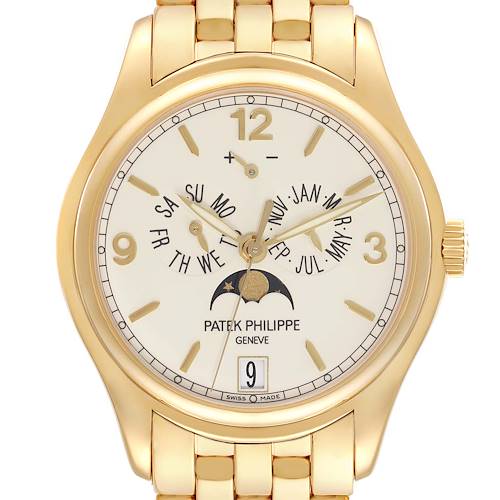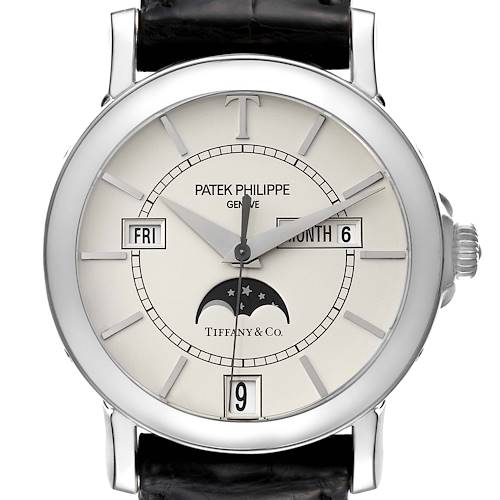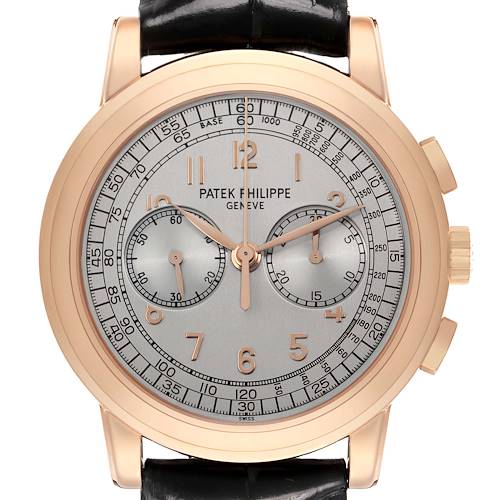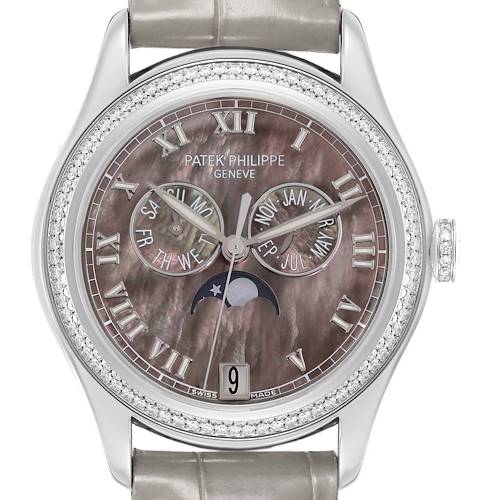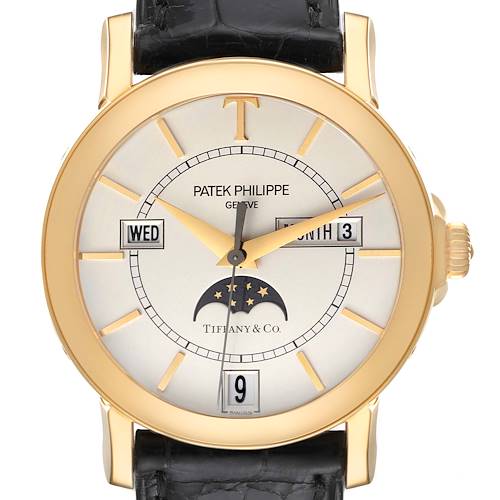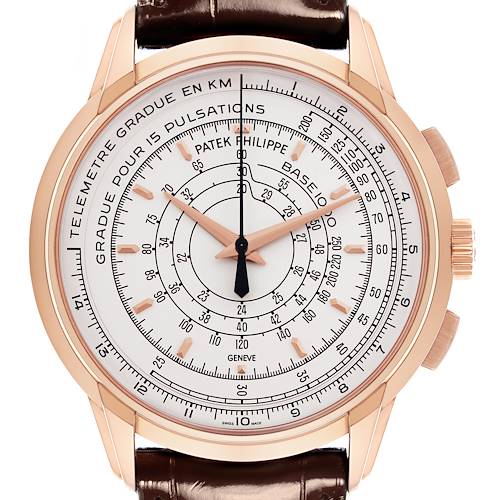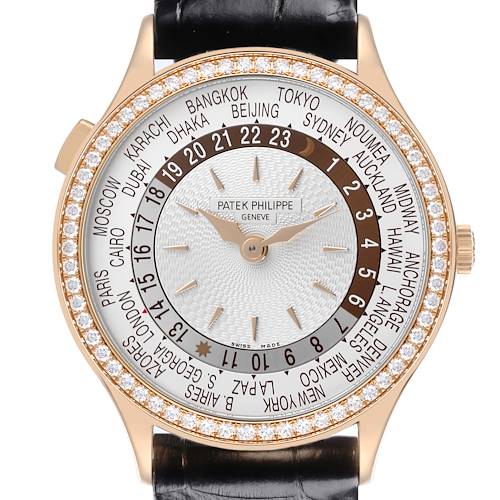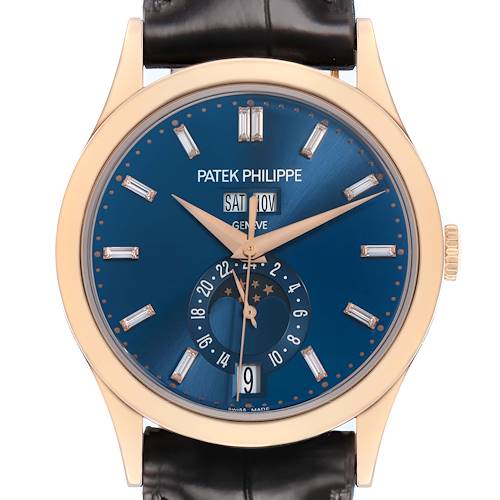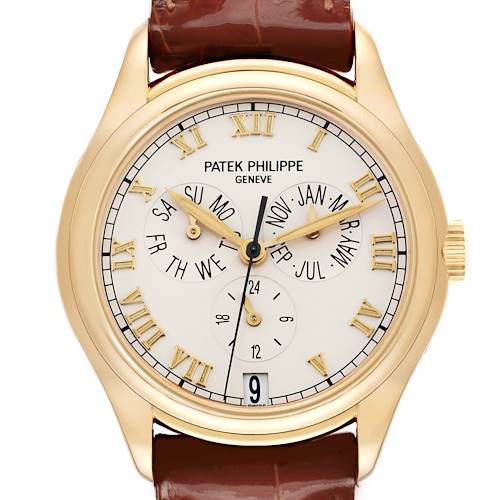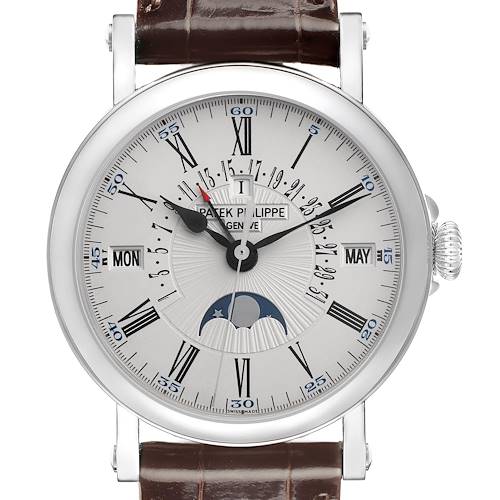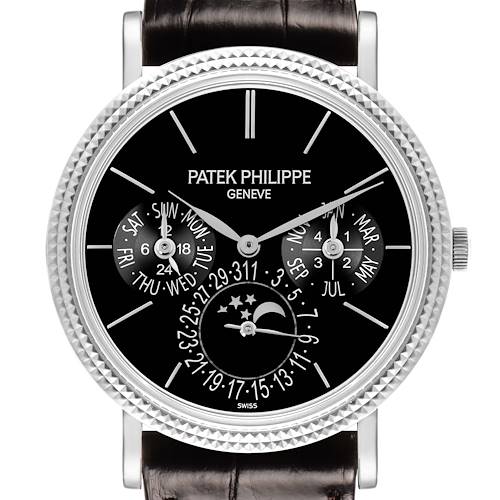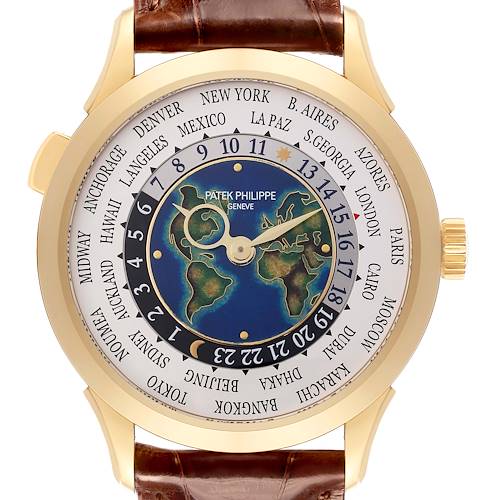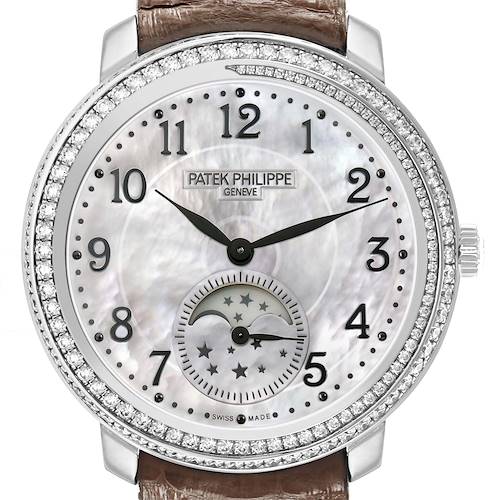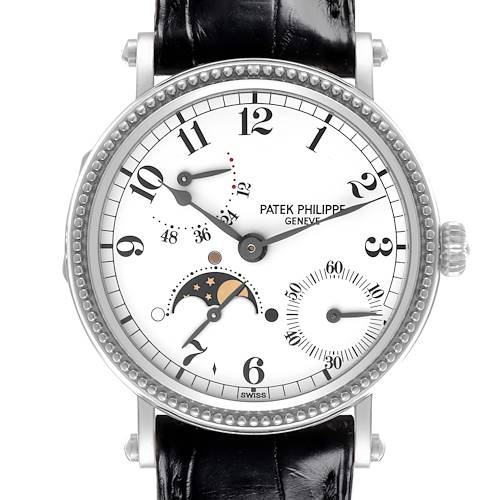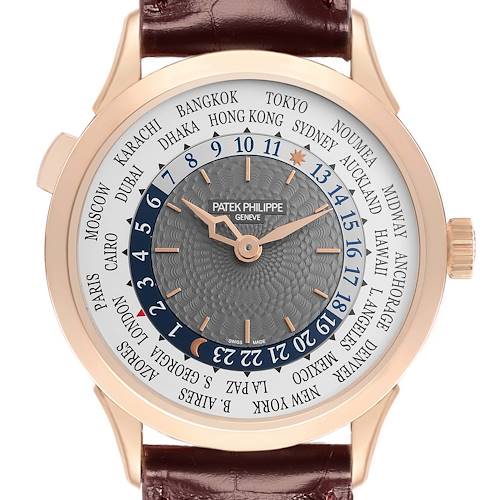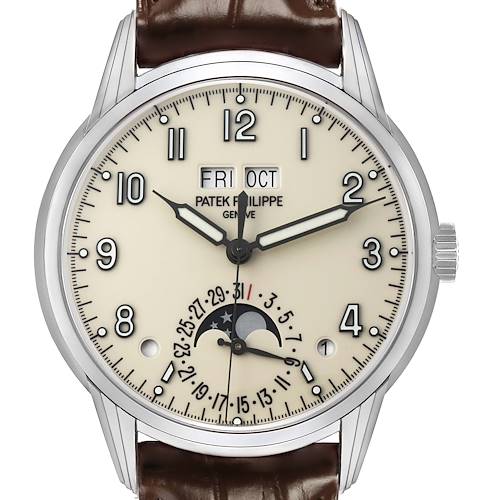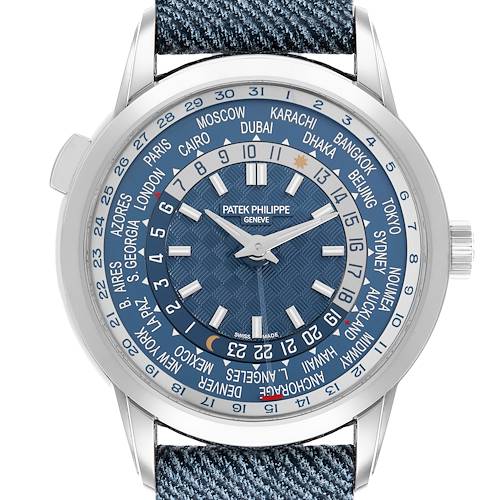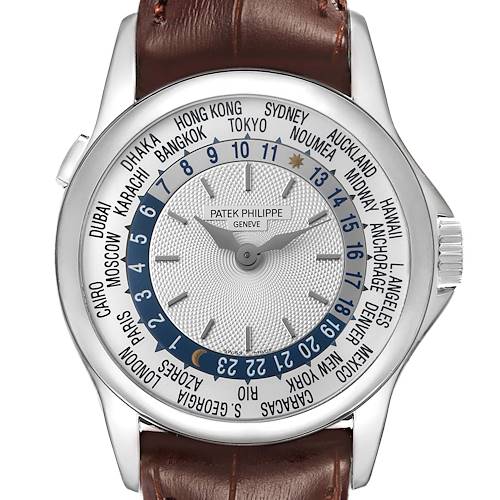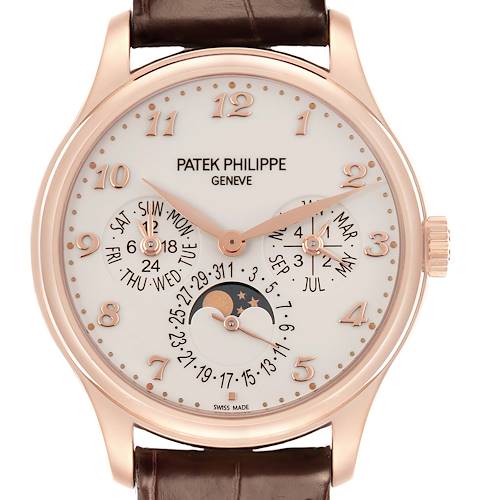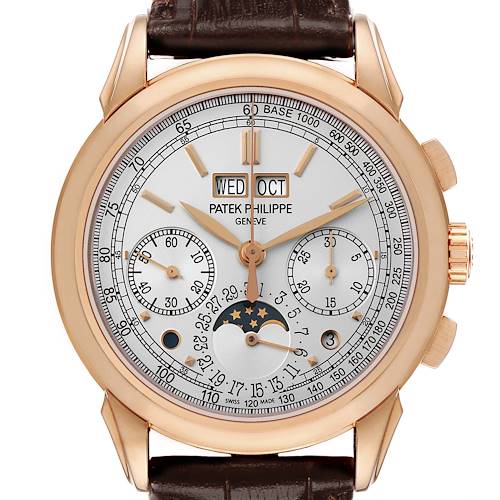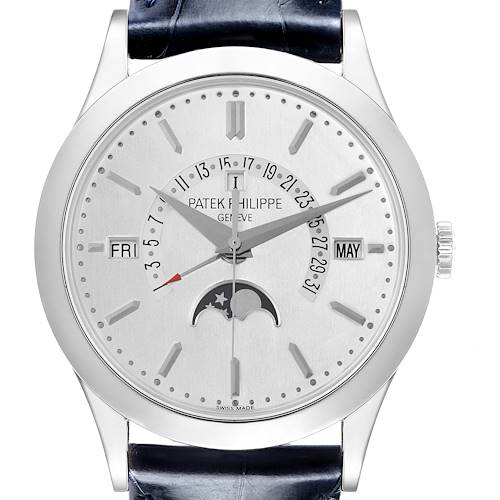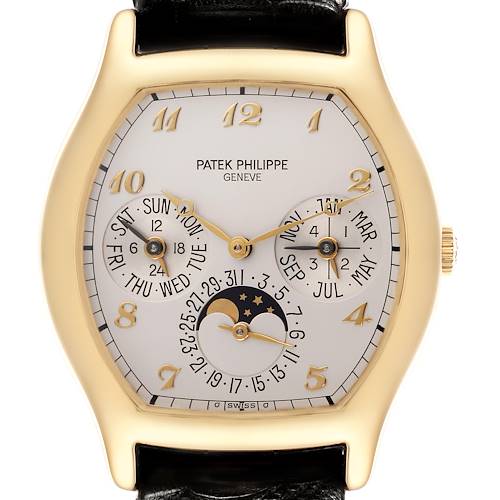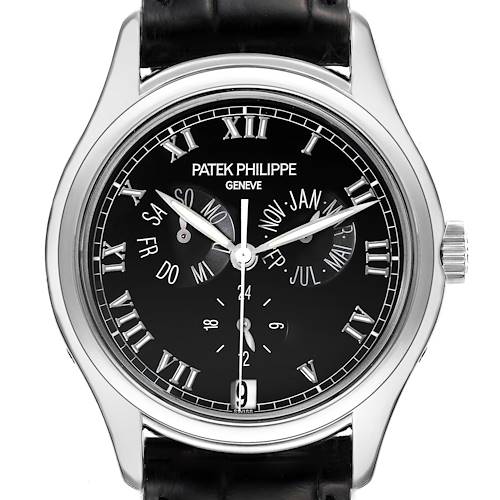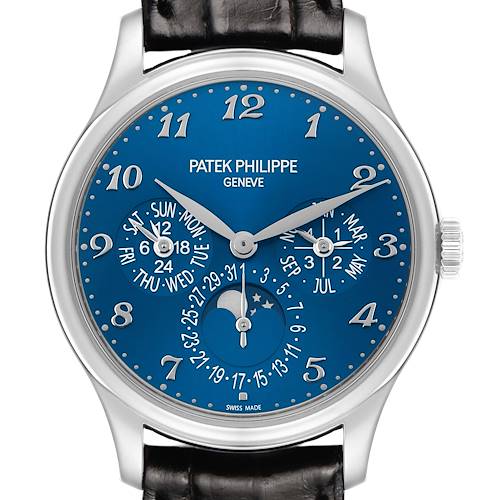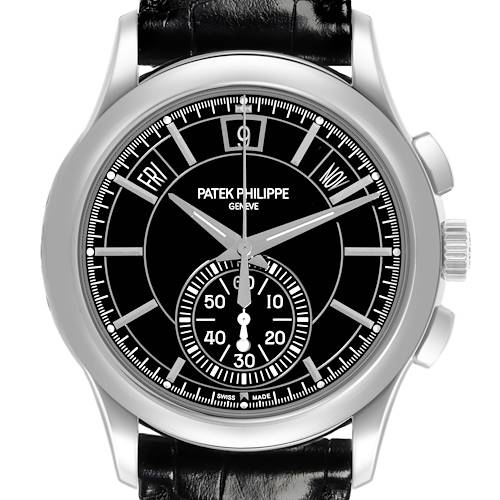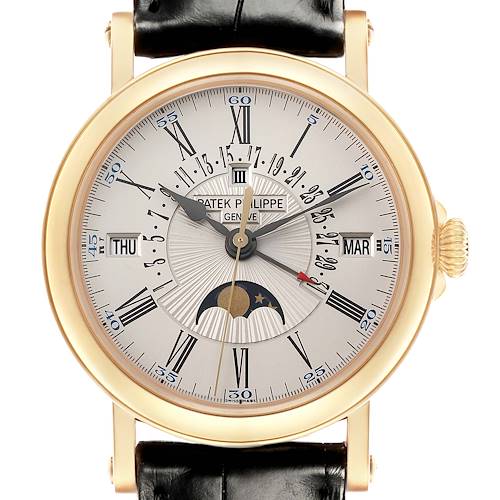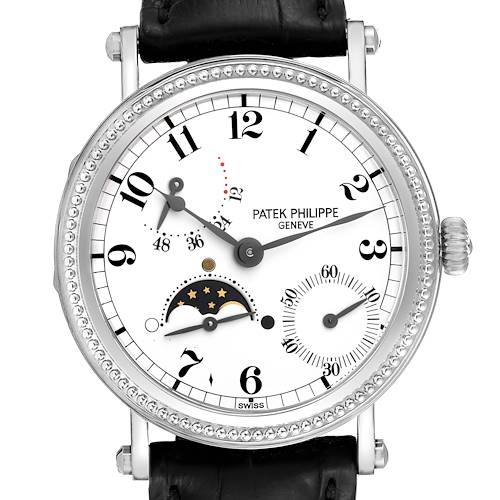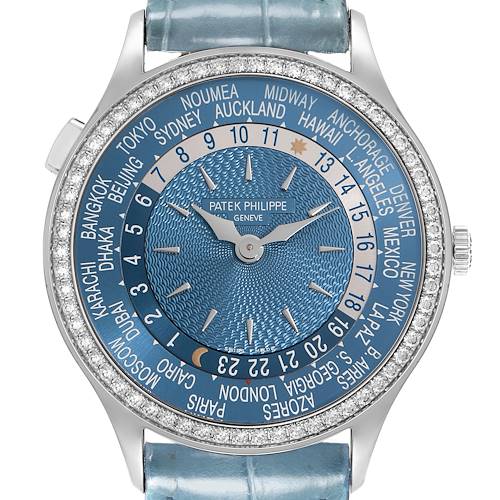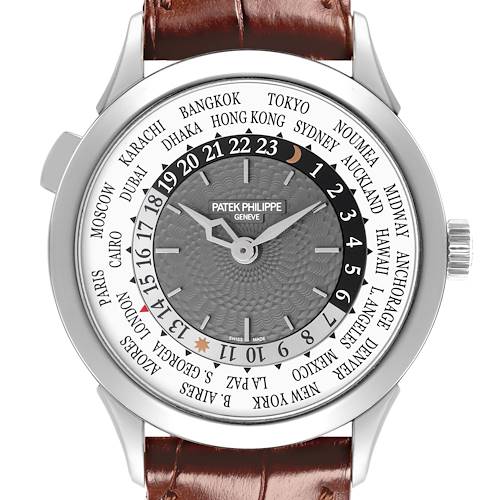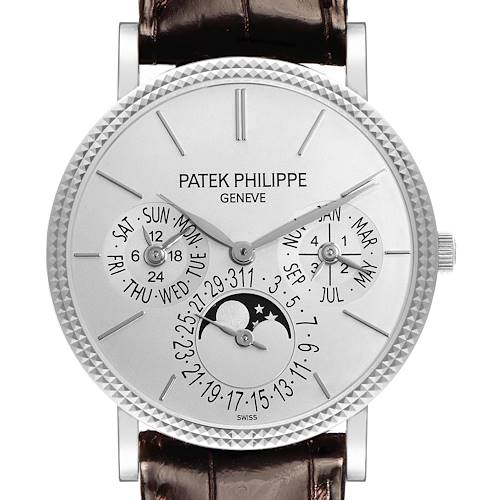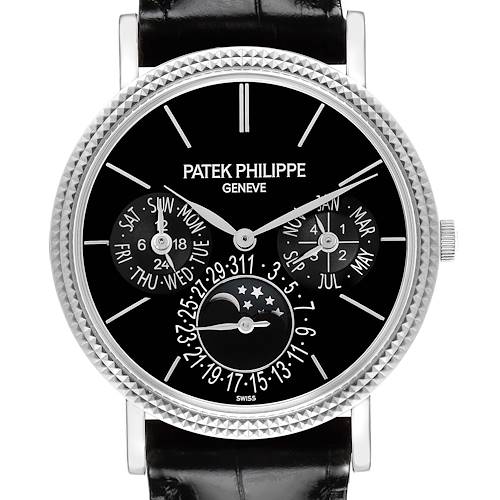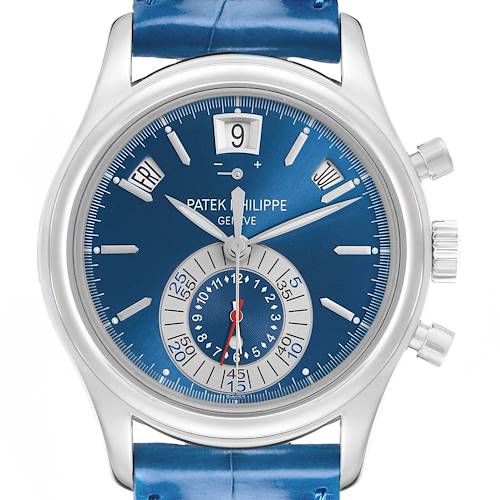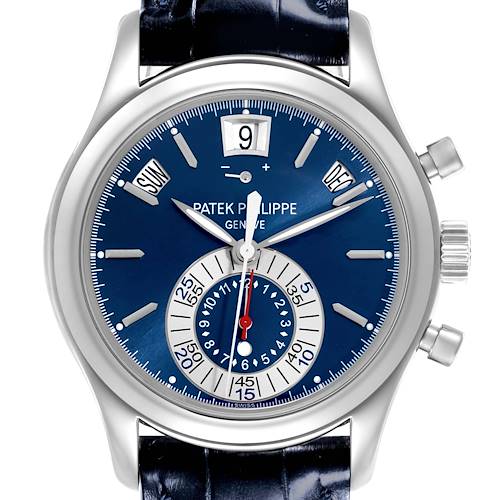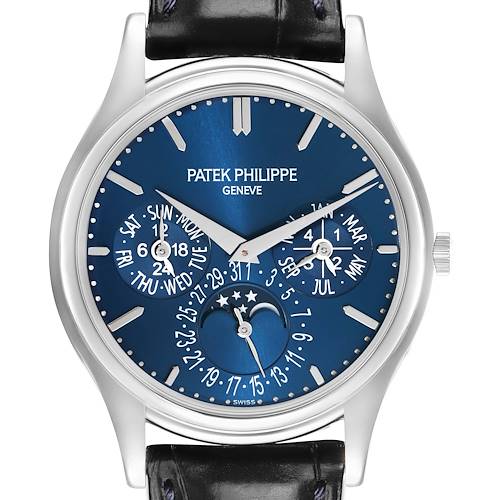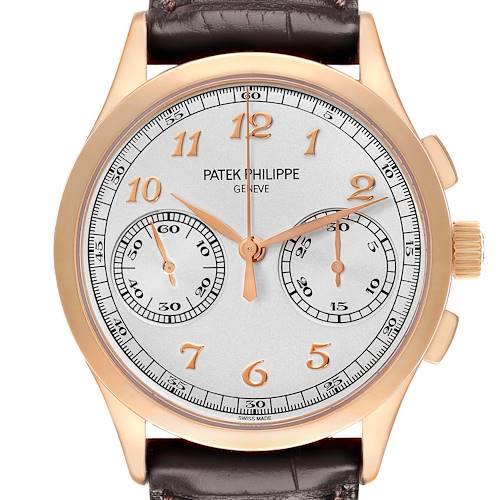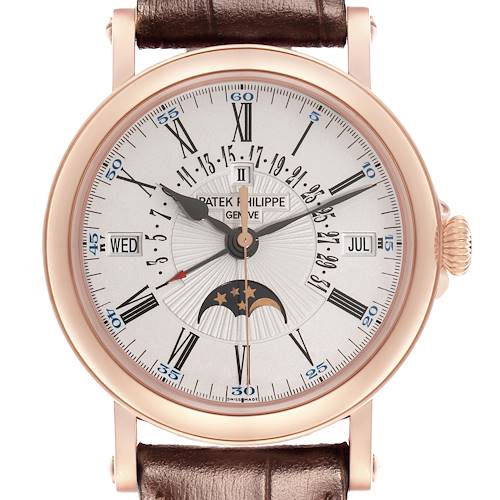- CALL US 404-814-1814
- LIVE SUPPORT
- EMAIL US
-
WISHLIST (0)
-
CART(0)

Patek Philippe Complications Watch Collection
303 MATCHES FOUND
IN STOCK
Patek Philippe Complications Collection
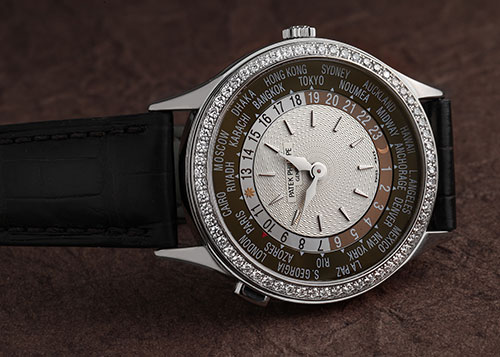
The Patek Philippe Complications and Grand Complications collection showcase the unrivaled artistry and skill of the Genevan manufacturer. Complicated watchmaking is considered the supreme test of a watchmaker’s expertise and a designer’s creativity. In its history, Patek Philippe has mastered the art of combining horological complications, having twice built the world’s most complicated timepiece, while its designs remain elegant and legible.
Today, Patek Philippe divides their complicated timepieces into two families. The Complications line contains timepieces with practical features, such as chronographs and annual calendars; while the Grand Complications line boasts timepieces with multiple advanced complications, like the brand’s signature minute repeaters, celestial maps, and the Grandmaster Chime – a marvel with its 20 complications.
Capturing the essence of elite watch craftmanship and design, Patek Philippe’s complicated timepieces are sought after and collected by watch connoisseurs’ worldwide – from the most seasoned collectors to tastemakers like Eric Clapton and Ed Sheeran.
Explore our selection of Patek Philippe Complications watches at SwissWatchExpo.com.
A BRIEF HISTORY OF THE PATEK PHILIPPE COMPLICATIONS
While the company traces its roots back to 1839, it began creating a firm foundation with the partnership of two watchmakers in 1844: Polish watchmaker Antoni Patek, and French watchmaker Jean Adrien Philippe, the inventor of the keyless winding mechanism. The two met at the French Industrial Exposition in Paris, and continued the watchmaking business with Patek & Cie, beginning in 1845. By 1851, the company was renamed to Patek, Philippe & Cie.
Antoni Patek focused on honing artisanal perfection – the ability to decorate watches with engravings and precious stones that turns them into works of art. Jean Adrien Philippe, meanwhile, focused on the refinement of techniques and development of new and more advanced complications.
Early years of the partnership resulted in key inventions – patents for the perpetual calendar mechanism for pocket watches and double chronograph in 1889 and 1902; the first complicated ladies’ wristwatch, a minute repeater, in 1916; the first split-second chronograph wristwatch in 1923, and the world’s first perpetual calendar wristwatch in 1925.
Following the Great Depression, Patek Philippe suffered financial distress, but was quickly acquired by the Stern brothers, owners of Fabrique de Cadrans Stern Fréres, who happened to be their exclusive dial supplier.
By 1933, they managed to create one of the most complicated watches ever created. In fact, it held the title until 1989 – the Graves Supercomplication. Bankrolled by banker Henry Graves Jr, the pocket watch featured 24 different functions including a perpetual calendar, Westminster chimes, sunrise and sunset times, and even a celestial map of New York, from the perspective of Graves’ apartment.
Patek also continued to build on the popularity of the chronograph by pairing it with other complications. These include the renowned World Time Chronograph ref 1415 released in 1940. Made by watchmaker Louis Cottier, it remains sought-after due to its easy-to-use and elegant design. It was immediately followed by the ref 1518, the world’s first series perpetual calendar chronograph.
From the 1960s, Patek continued to build on their portfolio of innovations. In 1962, they created a tourbillon movement that achieved a still-unbeaten timekeeping precision record for mechanical watches. In 1986, the company patented the secular perpetual calendar with retrograde date indication. In 1989, they introduced the Calibre 89. With 33 different functions, it was the most complicated mechanical watch in the world until 2015.
The company was kept within the Stern family, and in 1993, third-generation Philippe Stern became President of Patek Philippe. They patented and introduced the world’s first annual calendar in 1996, which has been ever present since in the watch world.
Today, Patek Philippe’s collection of complicated watches are grouped into two families – the Complications, with watches that have at least two or three features aside from time and date; and the Grand Complications, which feature over three functions. All Patek Philippe complications models come with in-house calibers and exquisite designs, all worthy of passing on to the next generations.
ABOUT THE PATEK PHILIPPE COMPLICATIONS COLLECTION
Patek Philippe Complications and Grand Complications timepieces showcase the unrivaled expertise and knowledge of the manufacture in creating advanced timepieces that are matched by elaborate design.
Patek’s complicated timepieces are usually offered in yellow, white, or rose gold, as well as platinum, but in recent years have also been available sparingly in steel editions. They are available in a range of designs – from understated dress watches to statement pieces.
Here are the main offerings of the Patek Philippe Complications and Grand Complications collections.
COMPLICATIONS
The Patek Philippe Complications line features a suite of timepieces with at least two to three features on top of the time and date. The current collection has 36 models featuring the following functions:
- Moonphase - displays the sunlit portion of the moon as seen from the Earth, in a subdial.
- Weekly Calendar - displays the current week number, which is particularly useful for modern businesspeople. This design is notable for its use of exclusive “handwritten style” letters and numerals.
- Annual Calendar - one of Patek Philippe’s flagship models, patented in 1996. Indicates the day of the week, the date, and the month, and requires correction only once a year. There are several interpretations of the Annual Calendar used by Patek: one indicating the day and month on separate subdials, one using a sector dial, and another with the day, date, and month shown on separate windows.
- Flyback Chronograph - an advanced chronograph that enables restarting the timer function, even while the chronograph is running.
- Pilot Travel Time - a utilitarian watch that combines aviator-style features with a dual time zone mechanism.
- World Time - displays the time in the current location, but also in 24 different time zones around the world. Patek’s design features a circular guilloché pattern center, fully crafted by hand. Patek also introduced a World Time Chronograph in 2016.
- Skeleton Movement - a completely skeletonized dial showing the self-winding caliber 240 movement, which is decorated and engraved by hand.
GRAND COMPLICATIONS
The Patek Philippe Grand Complications collection is a suite of watches that feature over 3 complications. The current collection has 36 models featuring the following functions:
- Perpetual Calendar - Patek Philippe was the first to create the perpetual calendar, which also displays the day, date, and month, but also includes the moon phase and leap year. Patek also makes an In Line Perpetual Calendar, where the day, date, and month appear in a single aperture; and a Perpetual Calendar Chronograph.
- Split Seconds Chronograph - an advanced chronograph that allows for timing two intervals that start at the same instant
- Celestial - a poetic astronomical wristwatch with a sky chart showing the phases and position of the moon, and time of meridian passage of Sirius
- Alarm Travel Time - a watch with Patek’s exclusive dual time zone "Travel Time" system, combined with a 24-hour alarm mechanism. The alarm rings using a hammer that strikes on a classic gong.
- Minute Repeater - the complication most associated with Patek Philippe. It is a highly complex movement that indicates hours, quarter hours, and minutes, then repeats the increments through chimes by activating a push or slide piece. Patek has also combined the Minute Repeater with World Time and Perpetual Calendar complications.
- Skymoon Tourbillon - the second most complicated Patek Philippe wristwatch as of 2021. It has 12 different features, including a perpetual calendar with retrograde date, a moonphase indicator, a minute repeater with two cathedral gongs, and a tourbillon.
- Grandmaster Chime - currently Patek Philippe’s most complicated timepiece. Aside from a reversible case and two independent dials, it features 20 complications including a grande and petite sonnerie, a minute repeater, crown position indicator, and five chiming modes. This timepiece has six patented innovations, and only seven of these were ever made.
PATEK PHILIPPE COMPLICATIONS REFERENCE NUMBERS
Patek Philippe uses a reference or model number to properly document their timepieces.
A Patek Philippe reference number is formed by alphanumeric characters as follows: xxxx/xxxxX-xxx, but it is common for Patek collectors to use just the first four digits to refer to a particular model.
First digit – starts with 3, 4, 5, 6 or 7. Men’s watches start with 3, 5, or 6, while ladies watch models have references that start with 4 and 7. Current production Complications models go by 4, 5 and 7 while Grand Complications models go by 5, 6 and 7.
Next three digits – randomized numbers. Watches from the same family usually share these three numbers.
Next five digits / letter – The first four digits are followed by a backslash, then a set of alphanumeric codes. These denote details of the case, bracelet, or dial, and work as follows:
xxxx / 1 - a watch on a metal bracelet
xxxx / 50 - a decorated dial. e.g enamel, gem-set or engraved
xxxx / 200 - gem set case (brilliant cut)
xxxx / 300 - gem-set case (baguette cut)
xxxx / 400 - gem-set case (high jewellery)
xxxx / 500 - engraved case
xxxx / 600 - enameled or lacquered case
xxxx / 700 - case with either gold or gemstones
xxxx / 900 - mixed techniques. eg diamonds and enameling
Next to these digits is a letter that indicates the case material:
T - Titanium
R - Rose gold
J - Yellow gold
G - White gold
A - Stainless steel
P - Platinum
The model number is completed by a three-digit number after the hyphen. These are used to indicate a version of the dial within a reference, as Patek Philippe often manufactures several different dial versions for the same model. ”001” refers to the first dial version, followed by ”010”, ”011”, and ”012” for next three iterations, and so on.
COMMON QUESTIONS ABOUT THE PATEK PHILIPPE COMPLICATIONS
The Patek Philippe Complications and Grand Complications collection embody the unrivaled skill and artistry of the manufacture, and strengthen their reputation as masters of horology. Here are some commonly asked questions about the Patek Philippe Complications and Grand Complications line.
WHAT IS THE DIFFERENCE BETWEEN PATEK PHILIPPE COMPLICATIONS AND GRAND COMPLICATIONS?
Both collections house a suite of watches that have functions beyond telling the time and date. Complications watches come with at least two to three features, while Grand Complications have more than three features. Both collections currently have 36 models.
WHAT IS THE MOST COMPLICATED WATCH PATEK PHILIPPE HAS PRODUCED?
The Grandmaster Chime ref 6300 is the most complicated Patek Philippe wristwatch ever made. Released in 2014 in time for the 175th anniversary of Patek Philippe, the timepiece boasts of 1,366 parts and 20 complications, as follows:
Day-of-the-week display
Month display
Date display (both dials)
Leap year cycle
Four-digit year display
24-hour and minute subdial
Moon phase
Grande Sonnerie
Petite Sonnerie
Minute repeater
Strikework mode display (Silence / Grande Sonnerie / Petite Sonnerie)
Alarm with time strike
Date repeater
Movement power-reserve indicator
Strikework power-reserve indicator
Strikework isolator display
Second time zone
Second time zone day /night indicator
Instantaneous perpetual calendar
Crown position indicator (winding / alarm setting / time setting)
Only seven of these were made, one of which is displayed at the Patek Philippe Museum in Geneva.
WHY ARE PATEK PHILIPPE COMPLICATIONS SO EXPENSIVE?
Patek Philippe Complications and Grand Complications watches are some of the most intricately crafted on the market. Whereas many luxury watches are typically finished by machine, all Patek Philippe watches are hand-made and finished.
Additionally, every Patek Philippe Complications watch features an in-house movement. Majority of Complications pieces are also offered in precious metals (gold and platinum), with the exception of very few steel models.
The painstaking way that Patek Philippe watches are created means their production takes longer, resulting in lower inventories, greater exclusivity, and thus higher prices.


